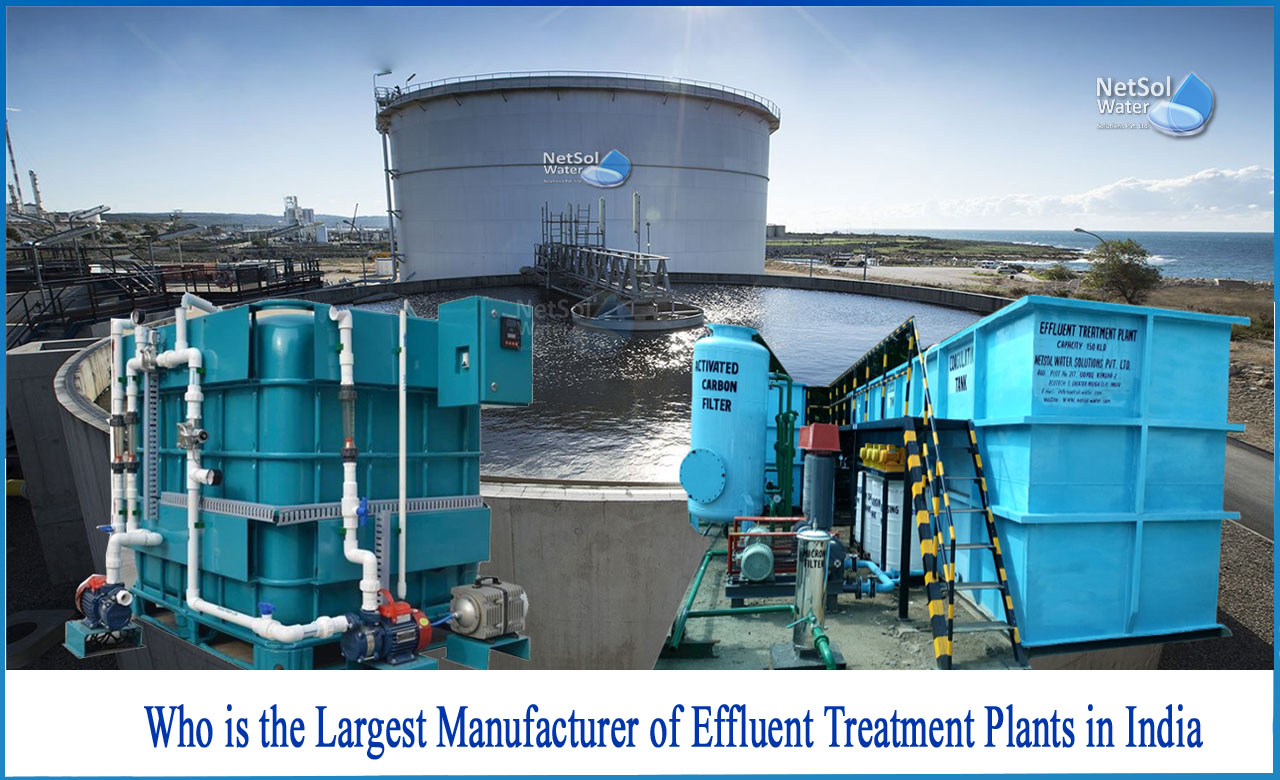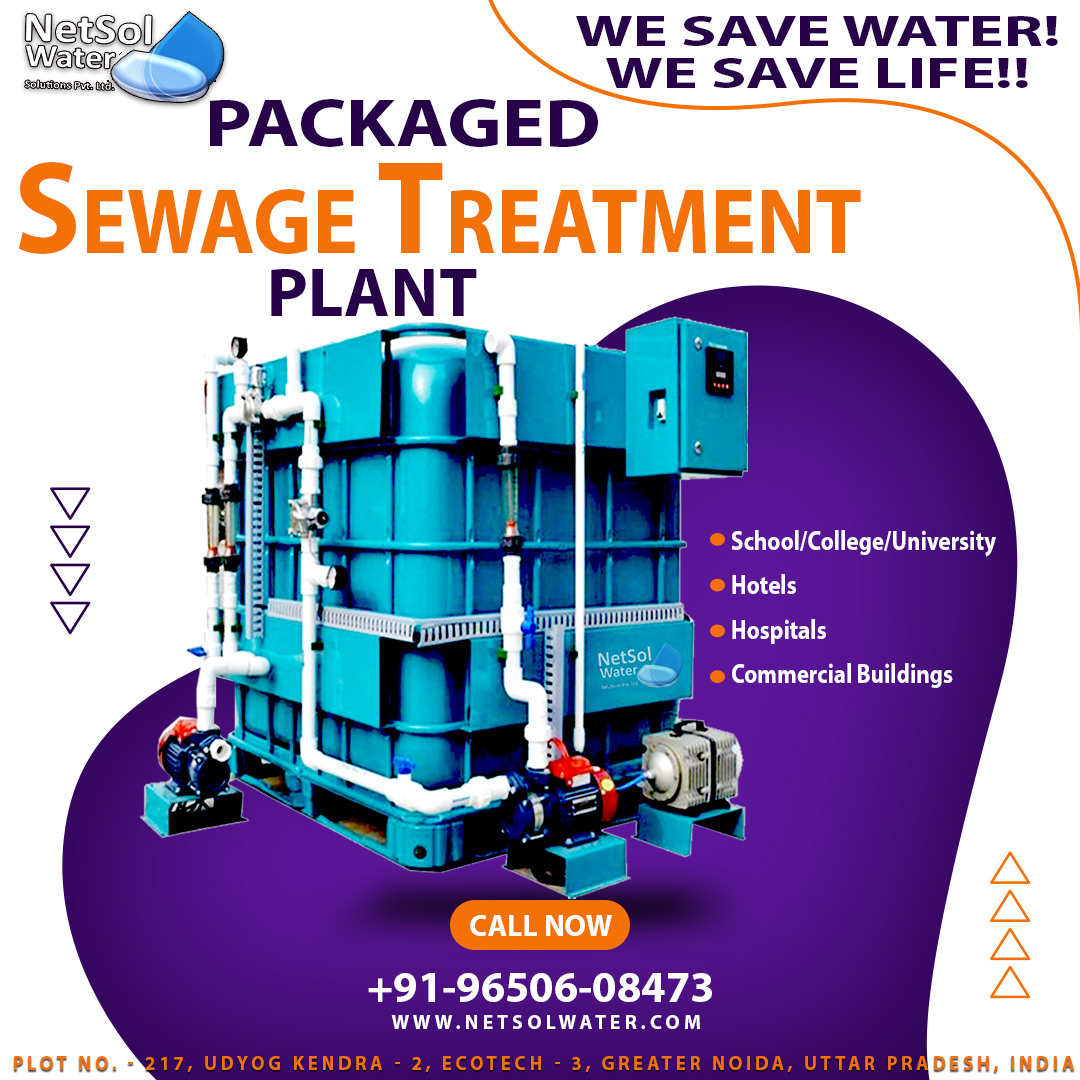Who is the largest manufacturer of ETP Plants in India?
Effluent Treatment Plants, or ETPs, are a sort of wastewater treatment processes that is specifically developed to purify industrial wastewater for reuse, with the goal of releasing clean water to the environment free of the detrimental effects of effluent.
Depending on the industry, industrial effluents contain a variety of elements. Oils and grease are found in some effluents, as well as poisonous elements (such as cyanide) and degradable organic contaminants. Because industrial wastewater contains a wide range of contaminants, a treatment method known as ETP is required.
Flow Chart of ETPs
Effluent from different manufacturing industries
Primary Filtration
Cooling and mixing
Neutralization
Chemical and Coagulation
Settling and Separation of Sludge
Pressure Filtration
Discharge
a. Preliminary Treatment: The goal of this step is to physically separate big pollutants. This level/process includes the following:
1: Screening: The first unit activity in a wastewater treatment plant is screening. The objective of a screen is to remove big floating solids by having regular apertures.
2: Sedimentation: A physical wastewater treatment method that removes suspended materials from wastewater using gravity.
3: Grit Chamber: The wastewater that moves into the grit chamber eliminates the dense inorganic materials that have made their way into the sewers, such as gravel, metal shards, and sand. Grit removal can help prevent pump damage and operational troubles.
4: Clarifiers are tanks with mechanical mechanisms for continuously removing sediments that have accumulated due to sedimentation before biological treatment.
b) Primary treatment: The goal is to remove floating and settleable items such as suspended particles and organic waste. Physical and chemical approaches are used in this treatment. It contains the following items:
1: Flocculation: A physical process that does not require charge neutralization. It entails combining destabilized particles into big aggregates that can then be easily removed from the water.
2: Coagulation: A procedure in which coagulants are added to a liquid in order to quickly settle minute solid particles into a bigger bulk. It allows for particle removal through sedimentation and filtration.
3: Neutralization: The major goal of this procedure is to keep the pH between 6 and 9 to suit the needs of the various processing units in the system.
4: Primary Clarifiers: These are used to restrict the flow of water to the point where organic materials sink to the bottom of the tank, and they also contain equipment for removing floating solids and greases from the surface.
c)Secondary or Biological Treatment: The goal of this treatment is to remove suspended particulates and residual organics from the effluent.
1: The Activated Sludge Process uses air and a biological floc made up of bacteria to clean industrial wastewater.
2: Aerated Lagoons: A treatment pond with artificial aeration to promote wastewater biological oxidation.
3: Trickling Filters: Also known as sprinkling filters, trickling filters are extensively used for the biological treatment of home sewage and industrial wastewater.
4:Rotating biological contactor: Allowing wastewater to come into contact with a biological medium in order to remove contaminants from the wastewater before releasing the treated wastewater into the environment.
d) Tertiary treatment: The goal of tertiary treatment is to provide the last treatment step to improve effluent quality before it is reused, recycled, or discharged into the environment.
1: Chemical coagulation and sedimentation: After primary and secondary treatment, chemical coagulation and sedimentation are utilized to increase the removal of solids from effluent.
2: Filtration: To assure high-quality water, the cleared wastewater is first routed to an adjacent filtration plant with massive filter blocks.
3: Reverse Osmosis: This method involves forcing effluent through a membrane that traps impurities on one side while allowing clean water to pass through on the other.
4: UV Disinfection: A disinfectant that is appropriate for industrial waste water. By maintaining water purity, it leaves no leftover disinfection in the water. There are no disinfection by-products produced.
Applications of ETP
The plant treats wastewater from numerous industrial sectors, including chemicals, medicines, printing, dyeing, electroplating, pickling, automobile, pharmaceuticals, food and beverages,leather industries, refineries, dairy, ready mix plants, and textiles, using diverse physical, chemical, biological, and membrane processes.
The importance of Effluent Treatment Plants and its capabilities
The most important natural asset or resource is water. Water is utilized for a variety of reasons, beginning with domestic usage and progressing to industrial use. These natural resources of water in industry get polluted as a result of their use.
Effluent treatment plants remove industrial effluents and polluted water from outlet pipelines, reservoirs, rivers, and lakes, among other places, and recycle the water resource for use in a variety of ways. These treatments are used based on a variety of elements or qualities of the waste water, as well as the available space or placement of the plants.
This type of Effluent Treatment Plant guarantees that contaminated and polluted water from industry is treated and made reusable before being discharged back into the environment. Humans will be unable to obtain clean, useable water for home activities until this treatment is implemented.
Factors on which ETP design depends
Essentially, the design of an effluent treatment plant is heavily influenced by the industry and location. The major factors to consider when developing effluent treatment facilities are the features of the location and the wastewater.
Untreated effluent quality and treated effluent quality are key considerations in the wastewater treatment plant design process. When it comes to treatment selection, additional considerations such as treatment efficiency, cost, and dependability must also be considered.
Another important factor to examine is the physical, chemical, and biological characteristics of wastewater. The size of an effluent treatment plant, or ETP, is determined by the flow of wastewater. The flow of wastewater should be predicted appropriately, taking into account all probable causes of any problems in hydraulic calculations, channels, and pipelines.
To maintain a steady downstream treatment process, we frequently need to build an equalization tank or pond to compensate for temporary high flows of water (e.g., rain, storm). These equalization ponds also assist to prevent water toxicity.
As a result, Netsol's ETP is one of the finest solutions for your industrial wastewater.
Advantages of ETPs
1: It cleans and recycles industrial effluent for reuse.
2: To cut down on the use of fresh water in industry.
3: Pollution prevention in the natural environment.
4: To comply with the Government's pollution emission standards and avoid paying a hefty fine.
5: To cut water acquisition costs.
What do we offer?
You can have an expert solution upon contacting Netsol Water as we are the leading manufacturer of Industrial and Commercial Water treatment plants and Wastewater treatment plants, among other services. Our treatment systems are very effective at removing all types of chemical, physical, and biological pollutants.
Product Specification for Netsol’s ETP
|
Capacity |
100 LD to 50 KLD |
|
Treatment Technique |
MIXED |
|
Type of Waste |
All types of effluent |
|
The capacity of Inlet Flow |
5000 m3/ hr. |
|
Service Location |
Manufacturing Industries |
|
Delivery Location |
Whole India |




